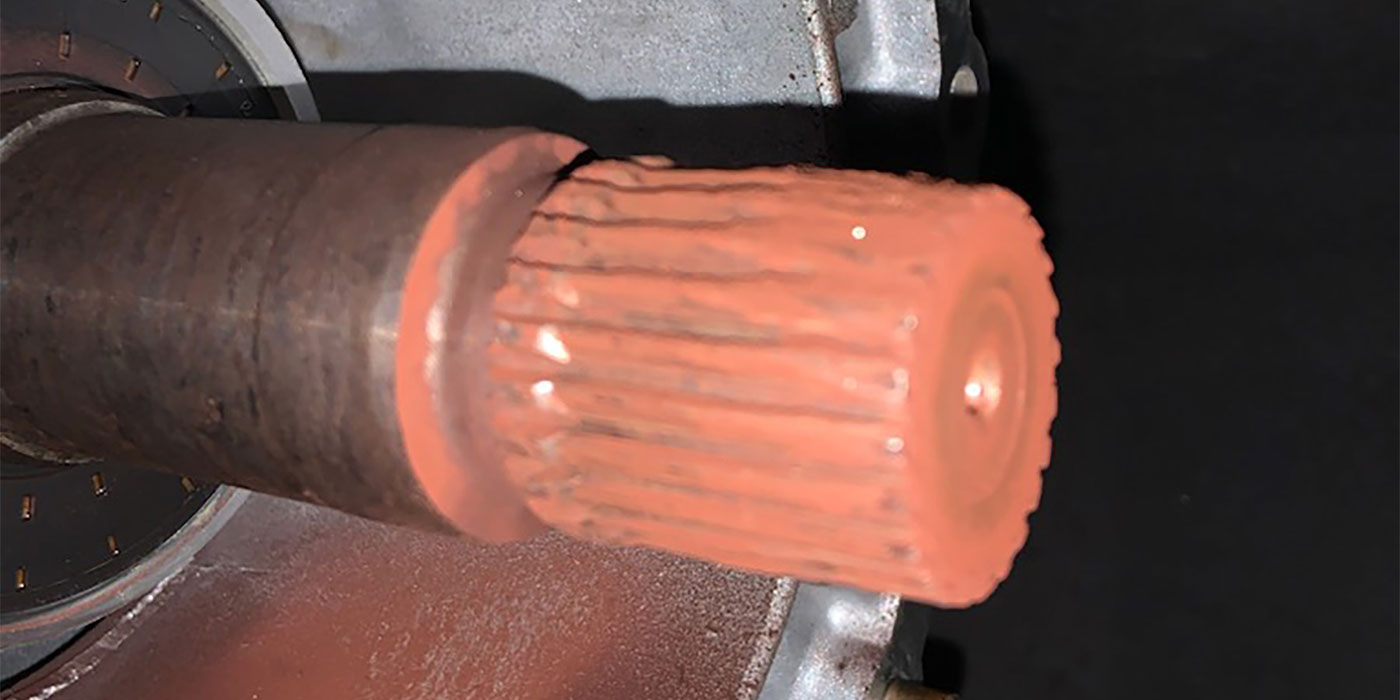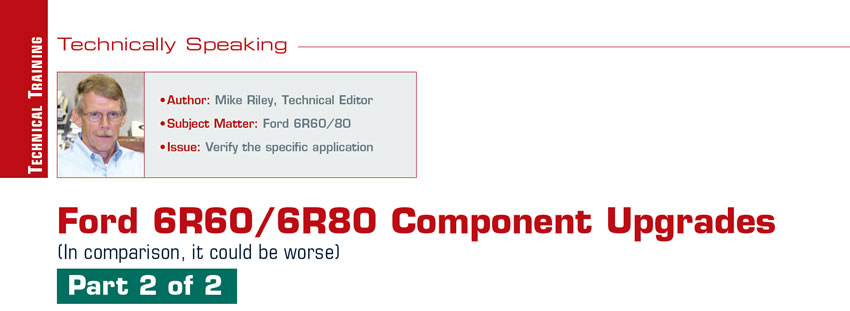
Technically Speaking
- Author: Mike Riley, Technical Editor
- Subject Matter: Ford 6R60/80
- Issue: Verify the specific application
In comparison, it could be worse
Part 2 of 2 Parts
A decade ago, Ford released the 6R60 transmission, a variant of the ZF6HP26. As part of the agreement with ZF, Ford used the actual 6HP for a short time, but Ford’s goal was to produce a home-grown unit, which Ford did in 2006.
The family includes the 6R75 and the 6R80. Model differences aside, modifications started to accelerate in 2010, resulting in a steady stream of upgrades well into 2014 and 2015. It is important to verify the specific application in order to receive the correct part during a repair.
The second part of this two-part presentation involves planetaries, filter and valve body.
Front (input) planetary: The front planetary carrier is another item that has had several part-number supersessions, some of which having minimal physical change. The 6R60 was launched with a three-gear planet carrier, but as more models were added, Ford started to use a four-gear planet (Figure 1). Whatever planet is used, the corresponding forward clutch retainer must also be used. Some time ago, Ford decided to discontinue the three-gear planet and currently only offers the four-gear design. As part of this upgrade, Ford will instruct the customer to purchase the four-gear planet, corresponding forward-clutch retainer and the newest-design overdrive drum assemblies based upon being a 6R60 or 6R80. The latest four-gear planet part number is BL3Z-7A398-A.
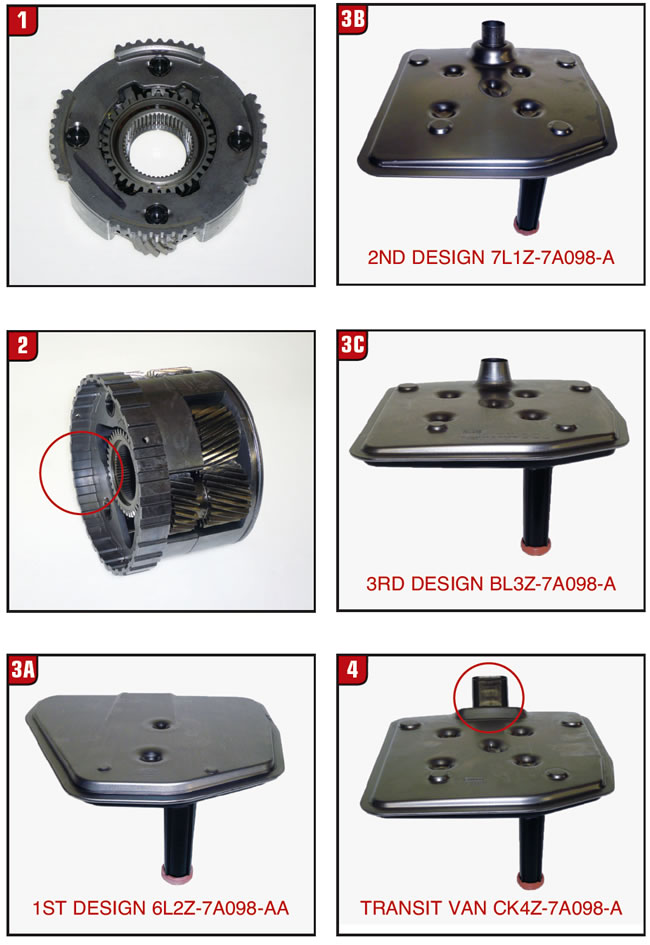
Rear planetary assembly: As with the front planet set, there certainly have been changes made to the rear planetary assembly, based upon year and model. The main difference occurred in 2011 with the addition of the aforementioned OWC. To make room for the OWC, the clutch splines of the carrier had to be shortened (Figure 2). Ford only provides the rear planet as a complete assembly including both sun gears and thrust bearings, which is good due to component changes over the years. Using the wrong item can affect overall endplay. Currently, the part number for the previous design planet set is 9L3Z-7D006-C. The part number for the new OWC planet set is FL3Z-7D006-A, and is half of the cost.

Filter: Although there have not been massive changes throughout the 6R family of transmissions, there is one component that is becoming an annoyance. The offending item, of all things, happens to be the filter, a relatively basic component. Unlike ZF, which chose to incorporate the filter into the plastic pan, Ford did at least design a regular looking filter for the 6R60 (Figure 3A). The part number for the first design filter is 6L2Z-7A098-AA. As time went on the need for a larger filter came about, along with an extended inlet to accommodate a deeper pan. The overall length of the inlet is about 1½” and the part number is 7L1Z-7A098-A (Figure 3B). In an effort to keep the machinery going, a third-design filter was released during 2010 in certain models with the main difference being the length of the inlet (Figure 3C).
The length of the third-design filter inlet is approximately 1” with the initial release having a separate tube just like the second design. The filter illustrated now uses a single extruded inlet and the OE part number is BL3Z-7A098-A.
If that wasn’t enough, the Transit Van using the 6R80 got another unique filter beginning in 2014 and as with the other versions the main difference is the inlet, which is rectangular (Figure 4). All versions up to this point use a ribbed seal that goes into the pump. The Transit filter part number is CK4Z-7A098-A.
Lastly, Ford decided it was time for the 6R80 to become an econobox; therefore, in 2015 they released an F-150 pickup with the start-stop feature. To accomplish this task, a customary start-stop motor/pump was added to the outside of the transmission. The F-150 is equipped with a 2.7L engine and is referred to as an FFV. Internally, the transmission received (guess what) another design filter. The steel part of the filter is like the previous two versions (Figure 5A).
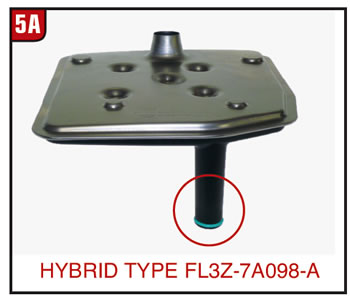
The difference has to do with the plastic side, which not only has an extra inlet for the auxiliary pump but also uses an O-ring on the neck of the filter (Figure 5B). The hybrid filter part number is FL3Z-7A098-A. It is inevitable that more start-stop models will surface.
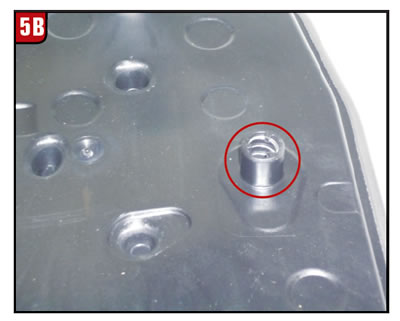

Valve body: As valve-body changes go, upgrades to the 6R transmissions have not been too terrible, although some have occurred. The big change of course occurred in 2010 when Ford started to phase out the internal TCM (mechatronics) and went to new design solenoids.
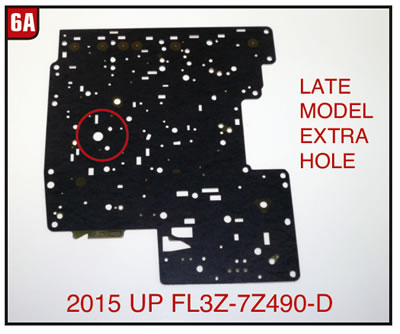
There have certainly been changes to the separator plate and the bonded gaskets (Figure 6A). Always refer to the stamp number that is on an exposed tab. One noticeable change, which makes little sense, has to do with the number of solenoid dampers used over the years. Most models have six dampers, although some may only have two, but regardless the separator plate must match the valve-body design. Currently, there are three separator plates to accommodate the variations (Figure 6B). First- and second-design separator plates were basically the same except for the solenoid-damper orifice holes. A third design that is used starting in 2015 uses six solenoid-damper holes but has one extra hole toward the center of the plate. As usual, always match replacements with the originals. The latest part number for the first design is CL3Z-7Z490-C and the second design part number is CL3Z-7Z490-D. The newest design plate with the extra hole is part number FL3Z-7Z490-D. The stamp numbers on the plates are different from the service part numbers.
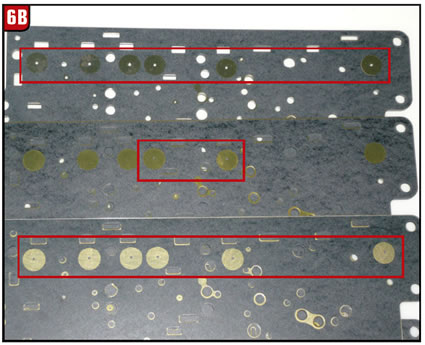
If replacing solenoids on 2010-up models, always duplicate the original stamp number to ensure proper calibration. If the valve body has to be removed on a model that has start-stop, there is a separate gasket that may need to be replaced (Figure 7). The part number for the gasket is FL3Z-7A136-B.
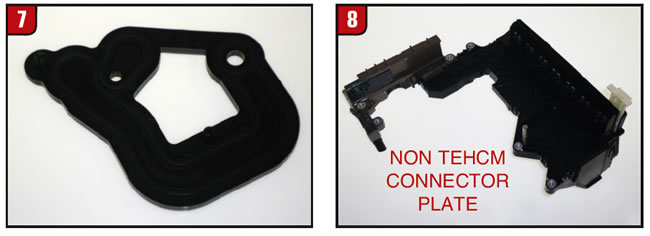
The solenoid connector plate that does not contain the internal TCM was also upgraded a bit due to a couple of issues with one design currently in use (Figure 8). Always use part number AL3Z-7G276-B to service all non-TCM models.
Lastly, there are now a fair amount of 2WD and 4WD output-shaft seals to contend with, which may not be contained in an overhaul set. Verify the application when ordering any rebuilding kit.














